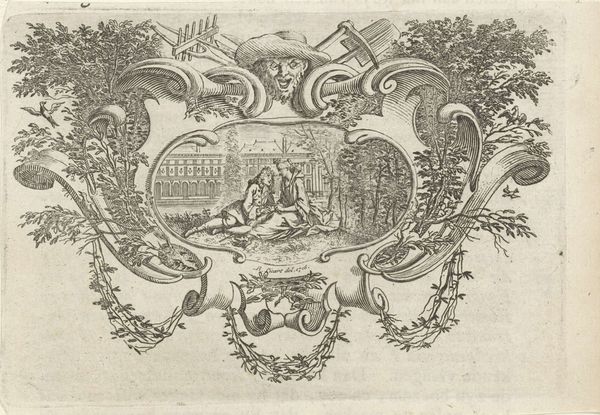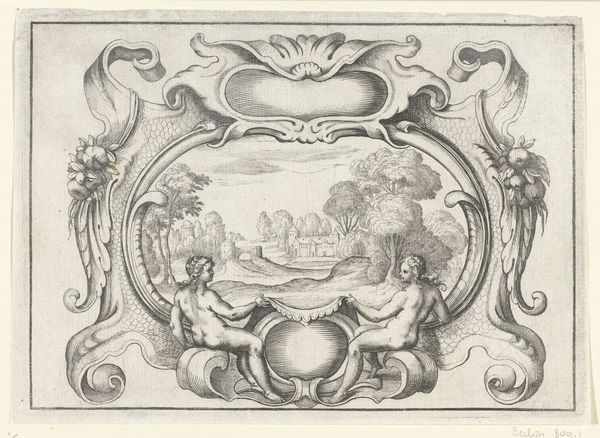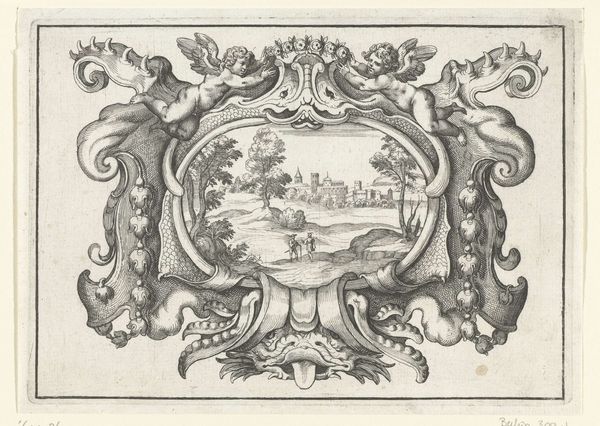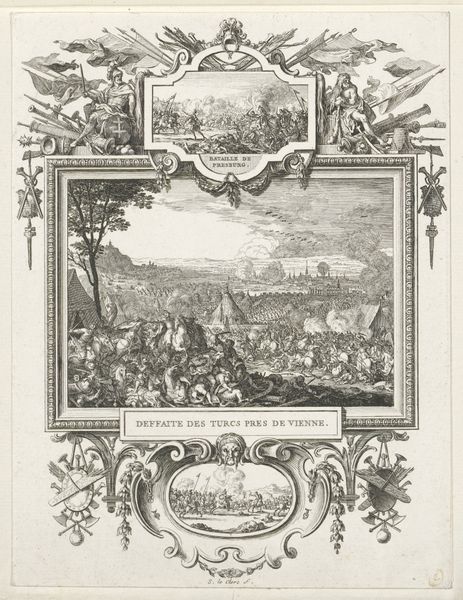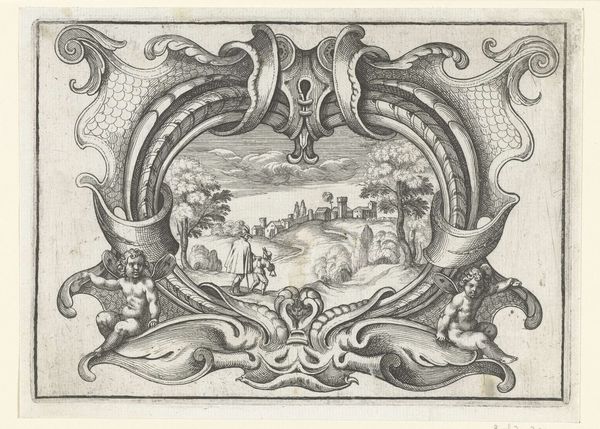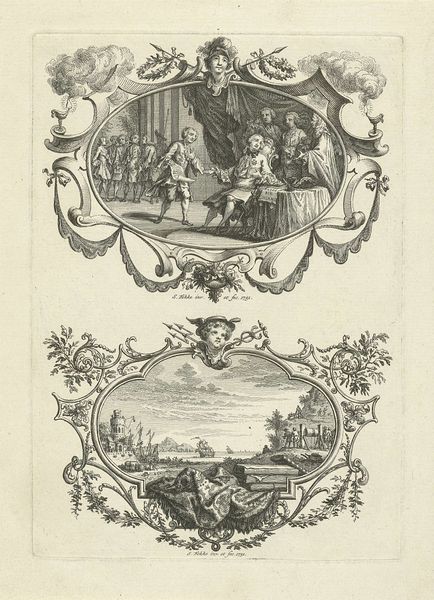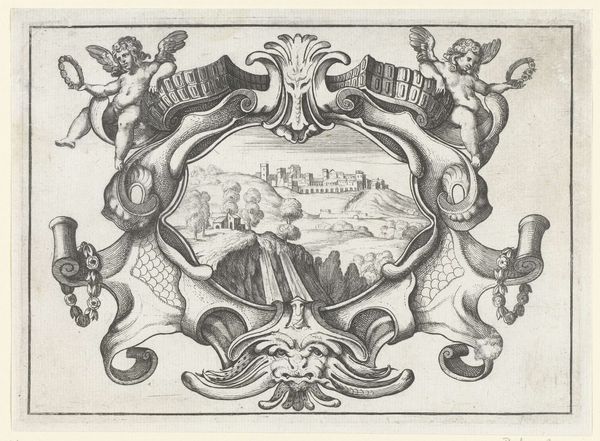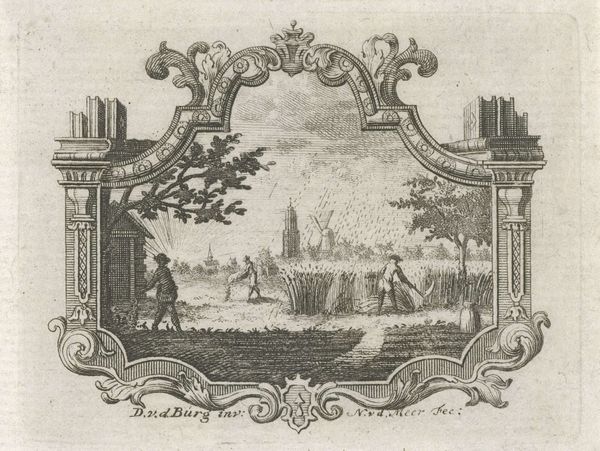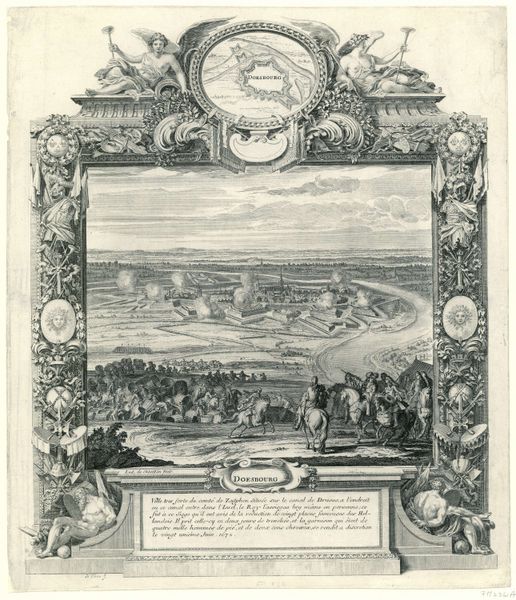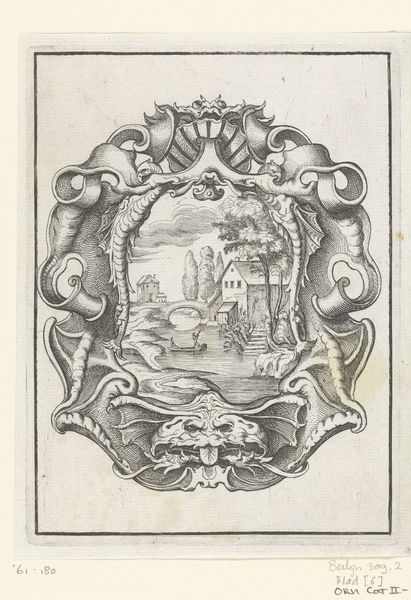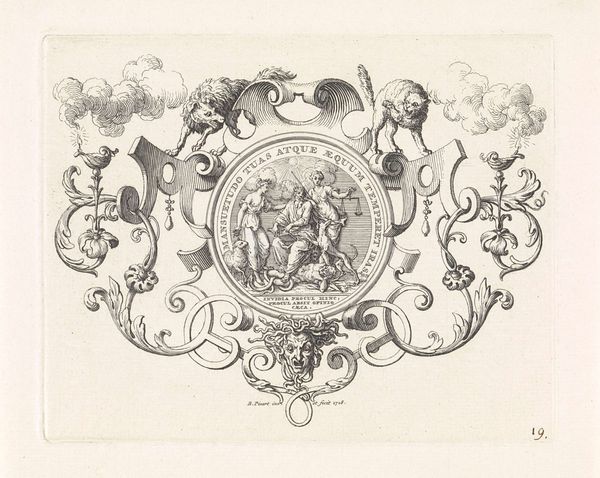
print, engraving
#
allegory
#
baroque
# print
#
old engraving style
#
cityscape
#
history-painting
#
engraving
Dimensions: height 90 mm, width 156 mm
Copyright: Rijks Museum: Open Domain
Jan Caspar Philips created this etching of the crucifixion of Christ some time in the 18th century. Cartouches like this one functioned as framing devices, often for maps, but also for prints of historical scenes. The crucifixion, of course, is central to Christian doctrine. But let’s consider the setting. We see Roman soldiers and city walls, suggesting the power of the Roman Empire. The composition leads our eye from left to right, moving from the distant crowd to the immediate aftermath of the event. The Dutch Republic, where Philips lived and worked, was shaped by religious conflict. Philips was a member of the Remonstrant Church, a liberal movement within Protestantism. The choice of this subject matter, therefore, would have been understood within the context of ongoing religious debates. Historians consult a range of sources to understand art. We consider the artist’s biography, religious and philosophical texts, and the history of printmaking in the Netherlands. In doing so, we see the power of this image to shape social and religious life.
Comments
No comments
Be the first to comment and join the conversation on the ultimate creative platform.
